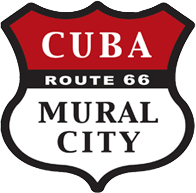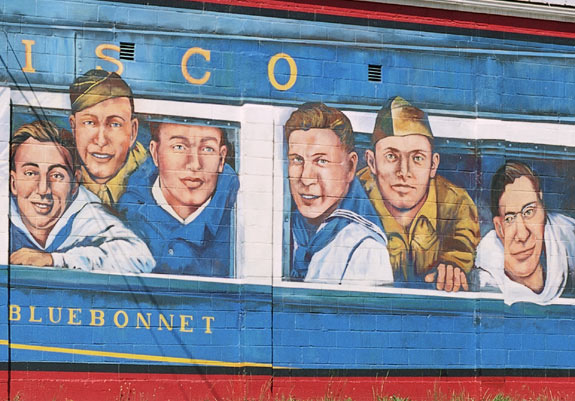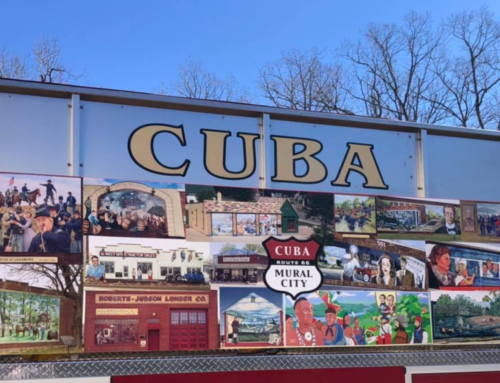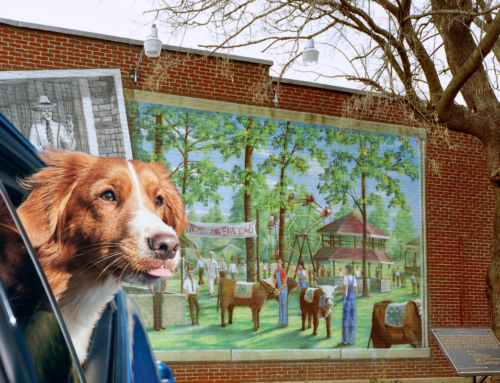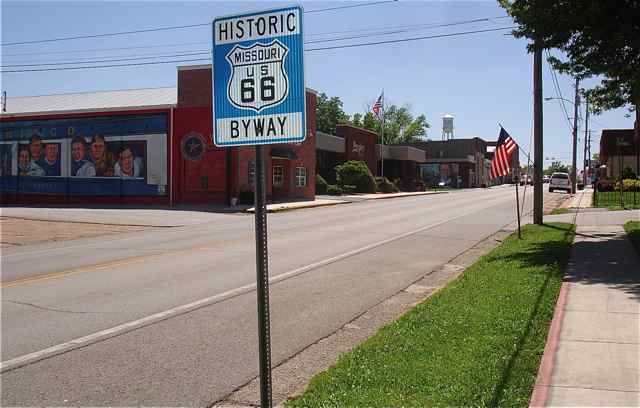
A scene from Cuba during the Memorial Day weekend: The faces of the young men in the window of the train are the faces of young men from the Cuba area who did not return from World War II.
During W.W. II the “Blue Bonnet,” a Frisco train named after the Texas state flower, was a familiar sight with its distinctive blue and white cars. It was this #7 train that whisked away Cuba’s service men as they left their homes to protect our way of life and values. They sometimes gave their lives to insure freedom.
Cuba’s Gold Star boys who gave their lives were the following: Ralph Burnell Fishwick-Navy; Preston A. (Bud) Gibson Jr.-Army; Lawrence E. Grant-Navy; Dale K. Hudson-Navy; Rex Hilliard Powell-Naval Reserve; and Floyd Cecil Vaughn-9th Air Corps.
According to a Cuba Free Press letter to the editor at the time the mural was painted, local Wilbur Vaughn remembered his family taking his brother Floyd to this train during World War II. He then went home, sat on the porch, and heard the whistle of the Blue Bonnet as it left. He recalled how sad it sounded.
You might wonder why these men who died in the service of their country were called “Gold Star Boys.” With Public Law 534, the 89th Congress directed the design and distribution of a lapel button–known as the Gold Star Lapel button–to identify widows, parents, and next of kin of members of the Armed Forces of the United who lost their lives during hostilities. The pin, which is issued by the Department of Defense, is gold and is on a purple background for combat death and all gold for death while in service.
When one of the service men was killed in combat, his relatives received this gold medal. Servicemen’s mothers often wore the medal to show that they had lost a son. It was a badge not only of sadness for loss but also one of pride because their sons had sacrificed for their countries.
For more information on the Gold Star Mothers’ organization, you can go to goldstarmoms.com.
Let Us Remember…
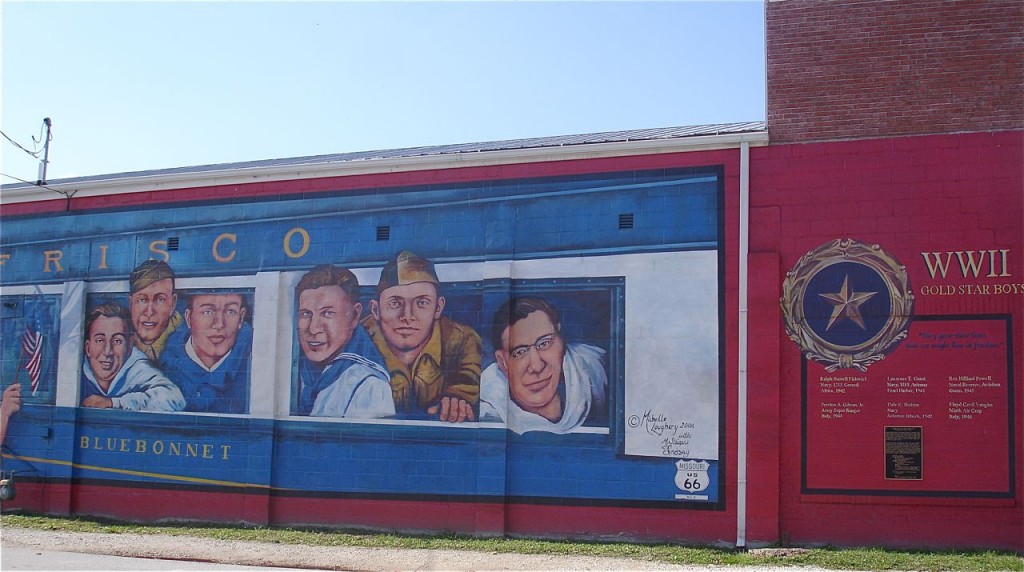
The names of the Gold Star boys and information about their deaths is painted in the red area next to their names. The Gold Star Medal is also pictured.
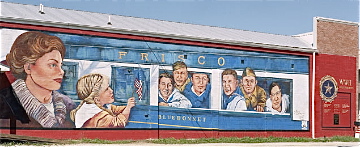
The full sweep of the mural is a patriotic display. It also remembers those who said good-bye to their loved ones.
The Artists
Michelle Loughery of Canada, bringing along her assistant Sara Lindsay, returned to Cuba for this mural. Local artist Shelly Smith Steiger also collaborated on this mural.
